Already in 2022, we participated in the Seeker Raid Hobby-Rallye equipped with the Mitas E-09. The tire impressed both on asphalt and on the rocky tracks and rough paths of the Bosnian mountains. The E-09 has since been replaced by the Enduro Trail XT+, which features the E-09's robust paddle block tread design at the rear, but is inspired by the former E-13 tire with smaller, taller knobs at the front. This combination, E-09 at the rear and E-13 at the front, was used by many off-road enthusiasts, including NastyNils during his Bosnia Rally participations, and now the combo is virtually standard with the XT+. According to Mitas, the tire is designed for 80% off-road use and 20% on-road use, but what does that mean in practical application? Unlike the very rocky, sharp terrain in the Balkans, the Enduro Trail XT+ must now prove itself in a different extreme: mud. On our journey through Slovenia, it rains daily, turning forest paths into a mud battle. Can the Mitas manage to get our fully loaded bikes through?
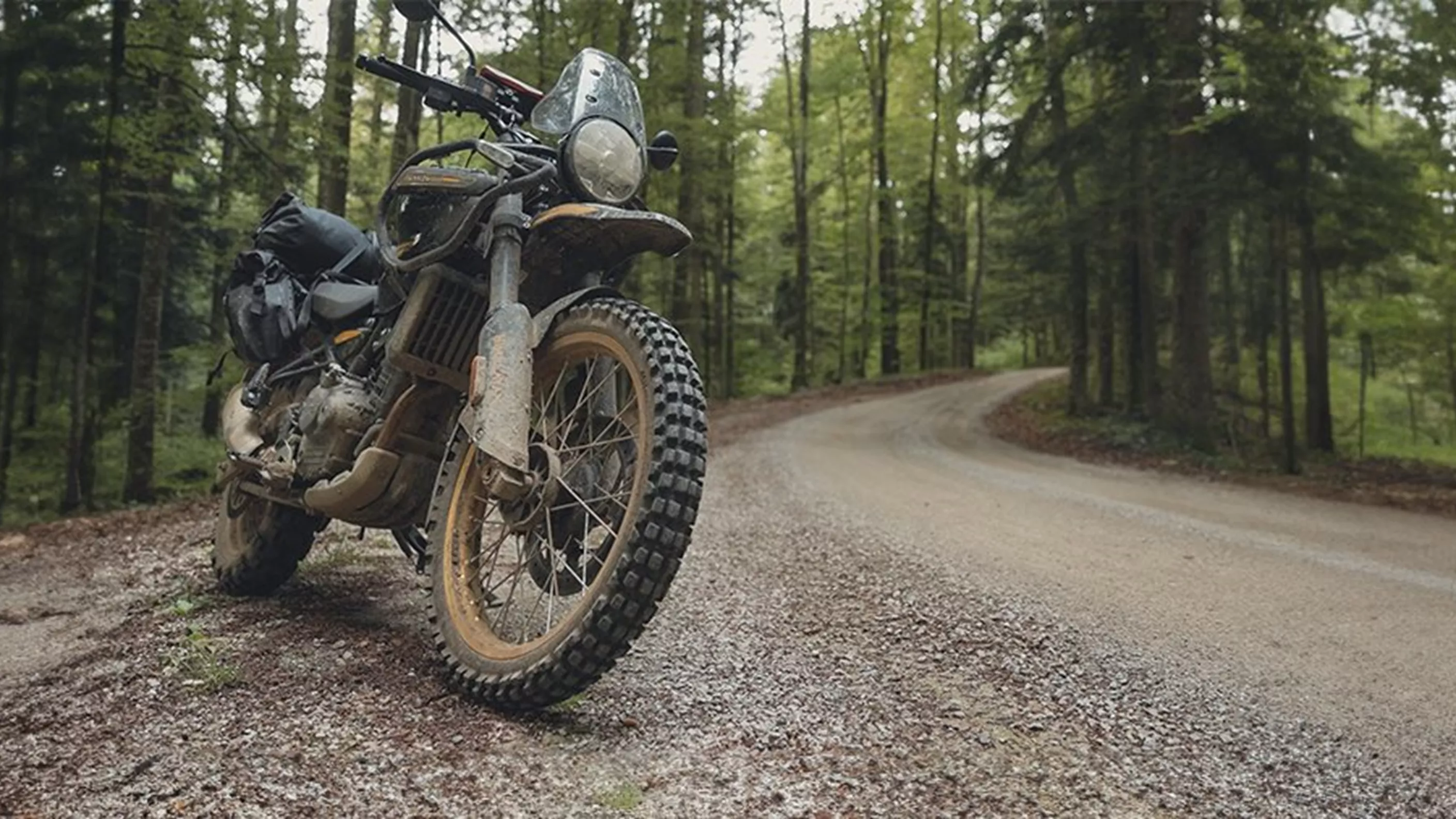
Mitas Enduro Trail XT+ Dakar Offroad Tire in the Big Test 2024
Highway, country road, gravel & mud - The XT+ under scrutiny
When it comes to motorcycles, one searches for the unicorn, an adventure bike that is suitable for both long journeys and tough terrain. Even though we are still looking for this mythical bike, Mitas might already have the right tire for it. We tested the Enduro Trail XT+ over 1,300 on- and off-road kilometers.
&width=72&height=72&bgcolor=rgba_39_42_44_0&mode=crop)
Gregor
published on 6/12/2024
Mitas Enduro Trail XT+ Dakar Offroad Tire: The Features
The Enduro Trail XT+ tire, with its shovel block profile, is designed for both hard and soft, muddy terrain. Similar to the E-09, the rear tire's flat profile features an average knob depth of 13.2 mm. The front tire, on the other hand, has the same profile as the E-13, offering a knob depth of 12 mm and also fits other Mitas Enduro Trail tires. The longitudinal and forward-facing knobs are aggressive enough to tackle tougher trails but are still expected to perform well on highway stretches and asphalt. The Enduro Trail XT+ is explicitly recommended for adventure bikes and is intended to bridge the gap between off-road and on-road performance. In the Dakar version, the heavy-duty rubber compound further enhances durability and increases the mileage of the standard XT+ by up to 20%. A harder carcass also provides increased puncture resistance and stability under heavy loads. Puncture resistance and increased mileage were ultimately the reasons why we chose the Enduro Trail XT+ Dakar for our tour. The planned mileage was not the issue, but colleague Schaaf and I hate nothing more than having to change tires in the dirt with our delicate cameraman/journalist hands. Let's see if our plan works out.
Mitas Enduro Trail XT+ Dakar Test on Asphalt - Highway and Country Road
The stated 20% road capability does not do justice to the Enduro Trail XT+. In reality, the tire can do much more than one would initially give it credit for. With full, road-typical air pressure, in the case of the Triumph Tiger 900 Rally Pro about 2.5 bar in the front and 2.8 bar in the rear, the XT+ is still somewhat tippy and nervous. However, as soon as you slightly lower the air pressure at the front to around 2 bar or just above, the steering behavior becomes more harmonious and linear. This way, a surprising amount can be achieved on asphalt. Sure, the knobs give way noticeably in lean angles, but at the same time, they maintain grip on dry asphalt for quite a long time. Thanks to the wide, clearly perceptible limit range, you move confidently through the twisties. Unfortunately, we were not granted too many kilometers with dry curves on our tour. In the wet, it requires more feeling and caution.
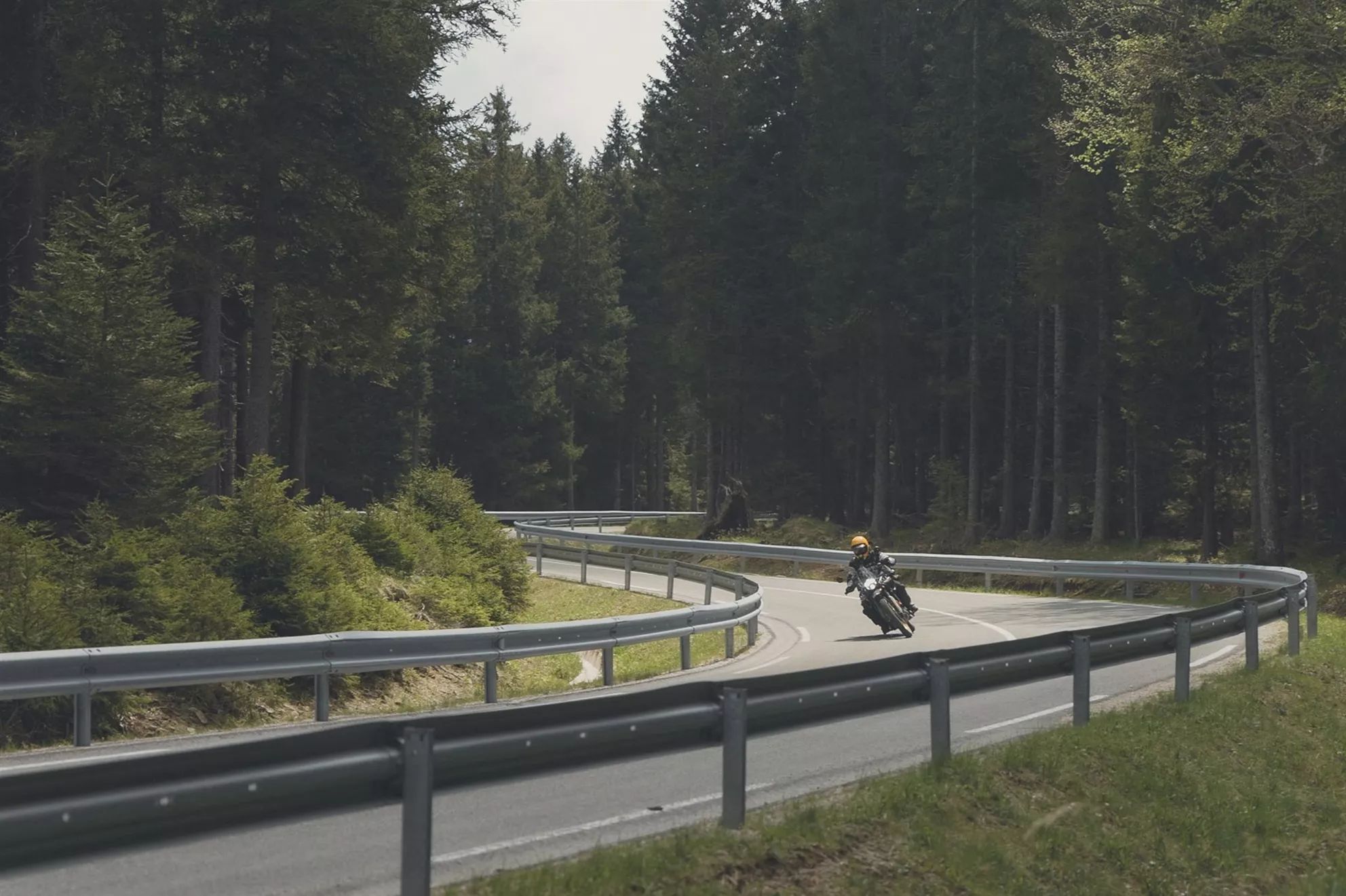
Despite its very knobby look, the Mitas Enduro Trail XT+ is also fun on asphalt. The only thing that takes some getting used to is its tendency to follow grooves.
Most of the asphalt kilometers were clocked by our tires on the Tiger 900 and the Royal Enfield Himalayan, but primarily on the highway. If you think that the delicate knobbies would wear down over hundreds of kilometers at 120 - 130 km/h, I can reassure you. Even after the stretch from Vienna to Ljubljana, nearly 400 km at a constant speed of 120 - 130 km/h, the tire shows hardly any signs of wear and still has more than enough tread for further off-road adventures. However, what you have to get used to both on country roads and highways is the tendency of the front wheel to follow every groove, milling edge, and other longitudinal irregularities. This can sometimes, for example when changing lanes, cause a bit of instability in the vehicle, but at least with our machines, it is not to a worrying extent. The motorcycle does not start to oscillate, but in such moments it briefly gets a left-right movement that subsides after a second.
Mitas Enduro Trail XT+ Dakar Test on Gravel Roads - Drift King
Our tour across Slovenia was largely self-planned, without knowing the routes in advance. The track simply follows the smallest paths, keeping away from places of civilization. Accordingly, we spent a lot of time in the wooded hills and mid-mountain ranges of the sparsely populated eastern Slovenia. All major paths here are gravel, of varying quality. You rarely find really rough, material-destroying gravel like in Bosnia. Instead, they are more fine, leveled gravel roads, sometimes very even, sometimes spiced with solid stones or earthy ground.
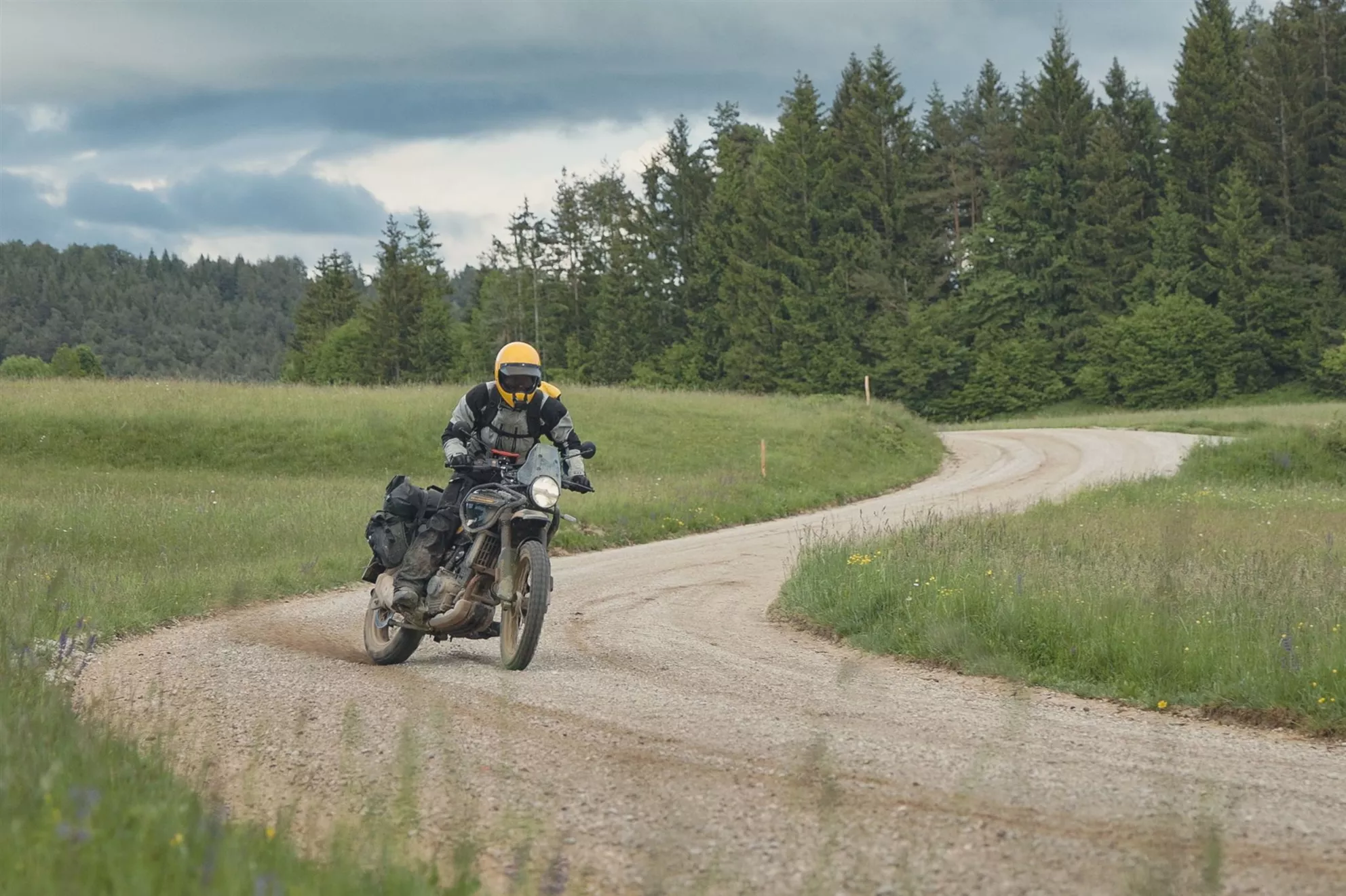
For Drift Kings and the Sensible - The Mitas Enduro Trail XT+ makes traction play transparent.
The bad weather is relatively irrelevant on these surfaces. If anything, the gravel track becomes even grippier. Combined with the forward-facing knobs on the front tire and further reduced air pressure, you can throw yourself into the gravel corners with great motivation. The lateral guidance of the XT+ front tire is quite decent; the slightly rounder shape compared to hard enduro tires remains predictable and does not tend to sudden folding. At the rear, you can play very finely with the traction. Pressure on the outer peg and the XT+ tire provides nice propulsion even on loose ground. Pressure on the inner peg and it goes sideways. At least on the finely graded gravel tracks. On paths with firmer, grippier ground, the Mitas tire has almost too much grip, and the drift must be initiated with some force to break the traction. But this is ultimately a luxury problem, and the gravel performance of the Enduro Trail XT+ is overall commendable.
Mitas Enduro Trail XT+ Dakar Test in the Mud - The Final Boss
That the Mitas tire works well on gravel did not surprise us much after experiencing the Seeker Raid with its predecessor, the E-09. The most exciting challenge for us and the tire was clear from the start: muddy ascents and descents. Not only is the TET of Slovenia known for becoming challenging in wet weather, but numerous forest and woodland paths also lie off our track. These are often not steep or demanding at all. However, due to the heavy rain of the past days and weeks, the soil is so saturated with water that even flat sections become sweat-inducing obstacles. In the mud, it is essential to maintain momentum, as it is almost impossible to get going from a standstill. To still get the maximum out of the available traction, the tire should remain as free as possible or have the ability to self-clean, meaning that mud is flung out of the tread. Whether and when the tire clogs up depends not only on the tire itself but also significantly on the ground and the speed ridden.
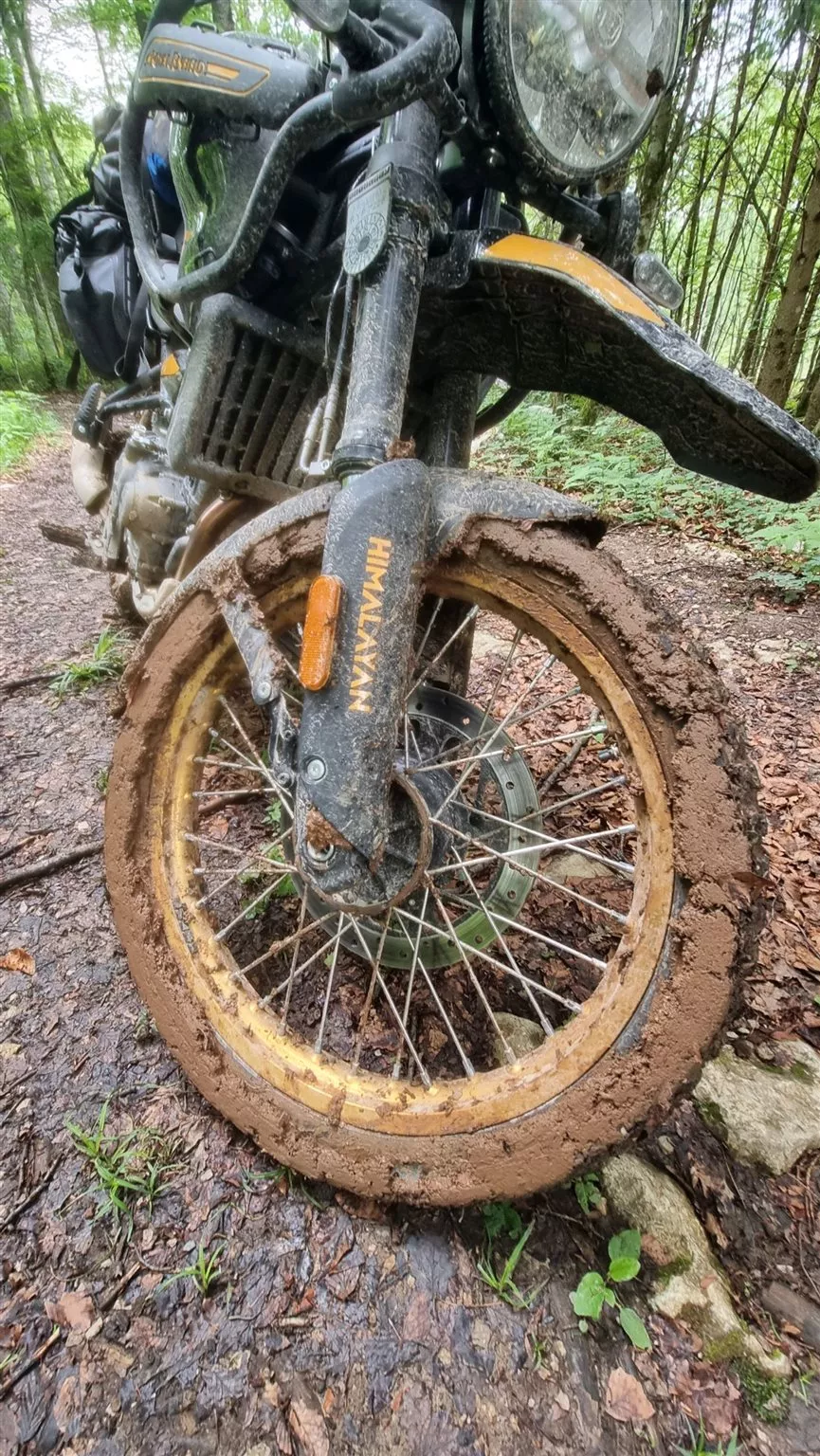
At some point, it's over. On this muddy, waterlogged ground, we would have struggled even with hard enduro tires. Even the deep treads of the XT+ are clogged.
For an adventure bike-suitable tire, the Enduro Trail XT+ offers a lot. Even in slippery situations, you can still find traction and maintain drive with a careful throttle hand. However, when it gets deeper and stickier, it reaches its limits. Although it takes much longer than most other "compromise tires" for mixed use, the Enduro Trail XT+ ultimately has its knobs too close together to shed thick mud. Especially on clay soil with scattered wet, slippery stones, the fun ends for us, and we have to turn back. With our average off-road riding skills and the relatively heavy bikes, any tire would have struggled under these circumstances.
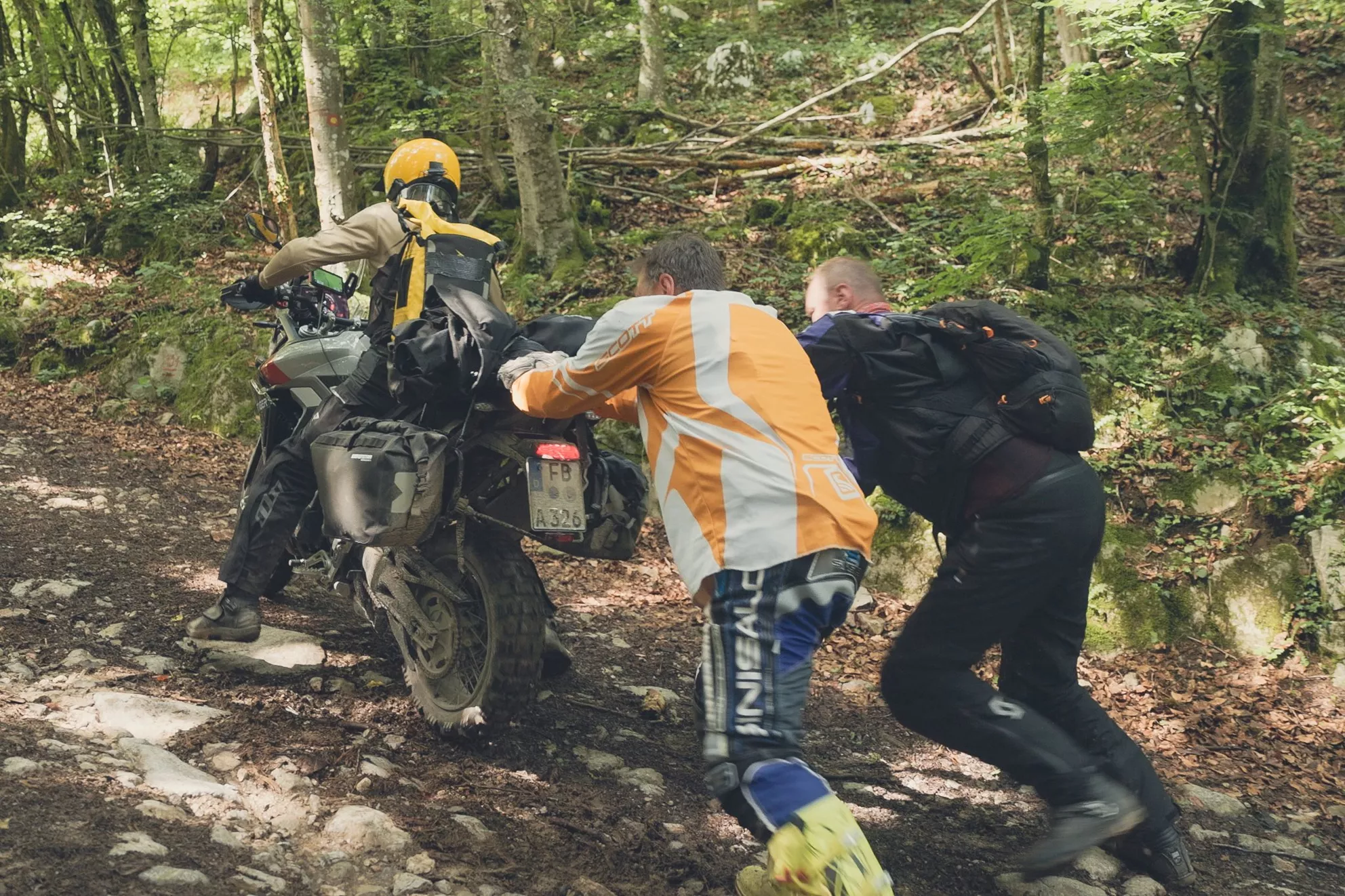
The Mitas XT+ does find a lot of traction, but once the momentum is lost, pushing on the slippery forest floor quickly becomes part of the program.
Mitas Enduro Trail XT+ Dakar Mileage - What Remains in the End
In total, we clocked 1,300 km on our journey, including about 500 km on the highway, 300 km on country roads, and 500 km on unpaved paths. After all these kilometers, the tire condition is actually still very good and suitable for at least one more tour, if not several. I can't specify the absolute mileage, especially since it also depends heavily on the vehicle and the route taken. In some relevant forums, there is talk of mileages of 2,000 km, although there are no real long-term experiences with the new Enduro Trail XT+ yet. Additionally, that seems quite tight to me. My assessment after these first 1,300 km is that you would only wear down the tire that quickly with a high asphalt proportion, a powerful bike, and a motivated throttle hand. For rides with a bit of restraint in the wrist and also some kilometers on soft forest or field paths, I would consider a mileage of 4,000 km or even more to be realistic. Below is the tire image after nearly 1,500 kilometers for comparison.
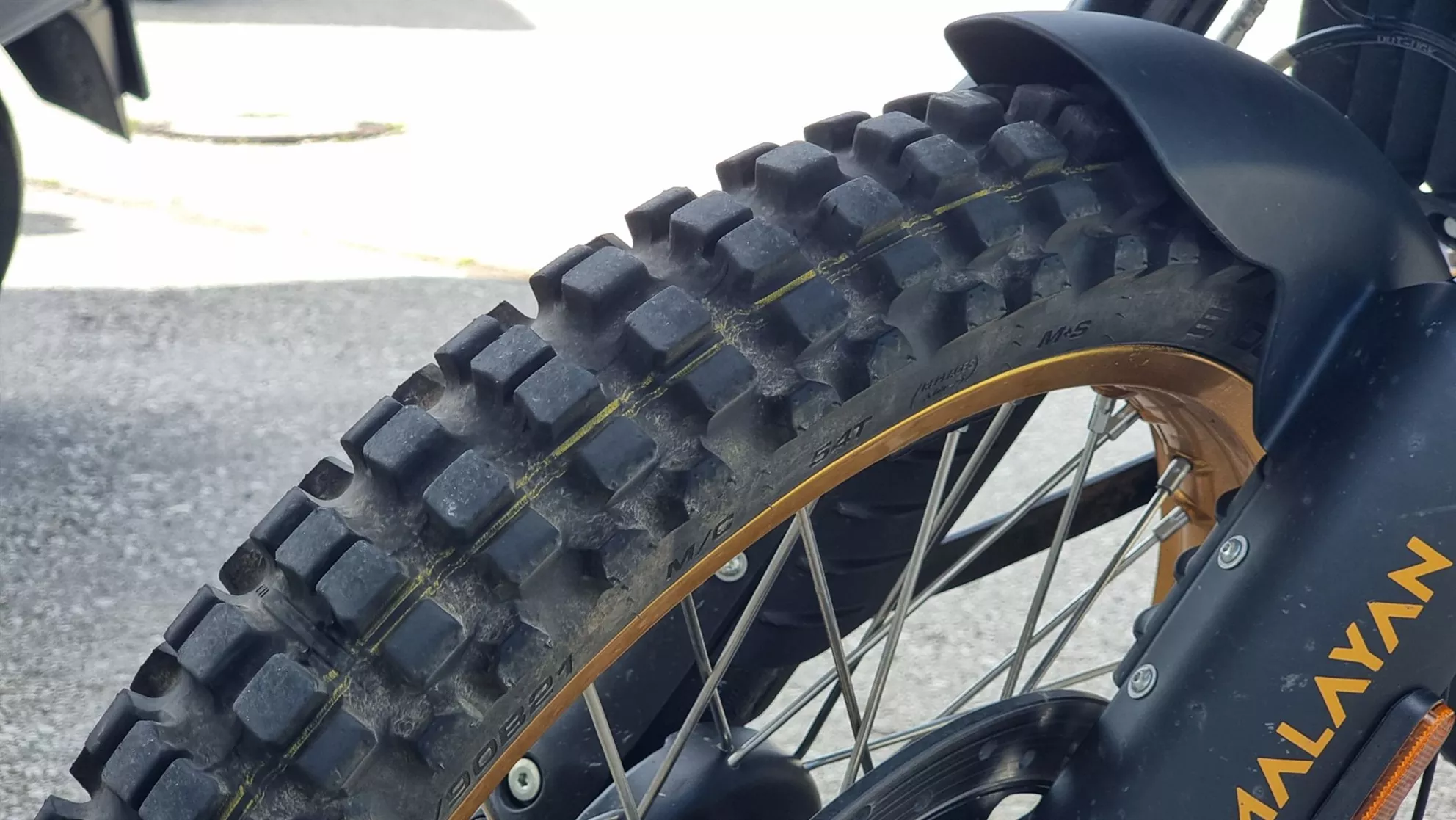
After approximately 1,500 km in mixed use, the Mitas Enduro Trail XT+ Dakar at the front still looks quite fresh.
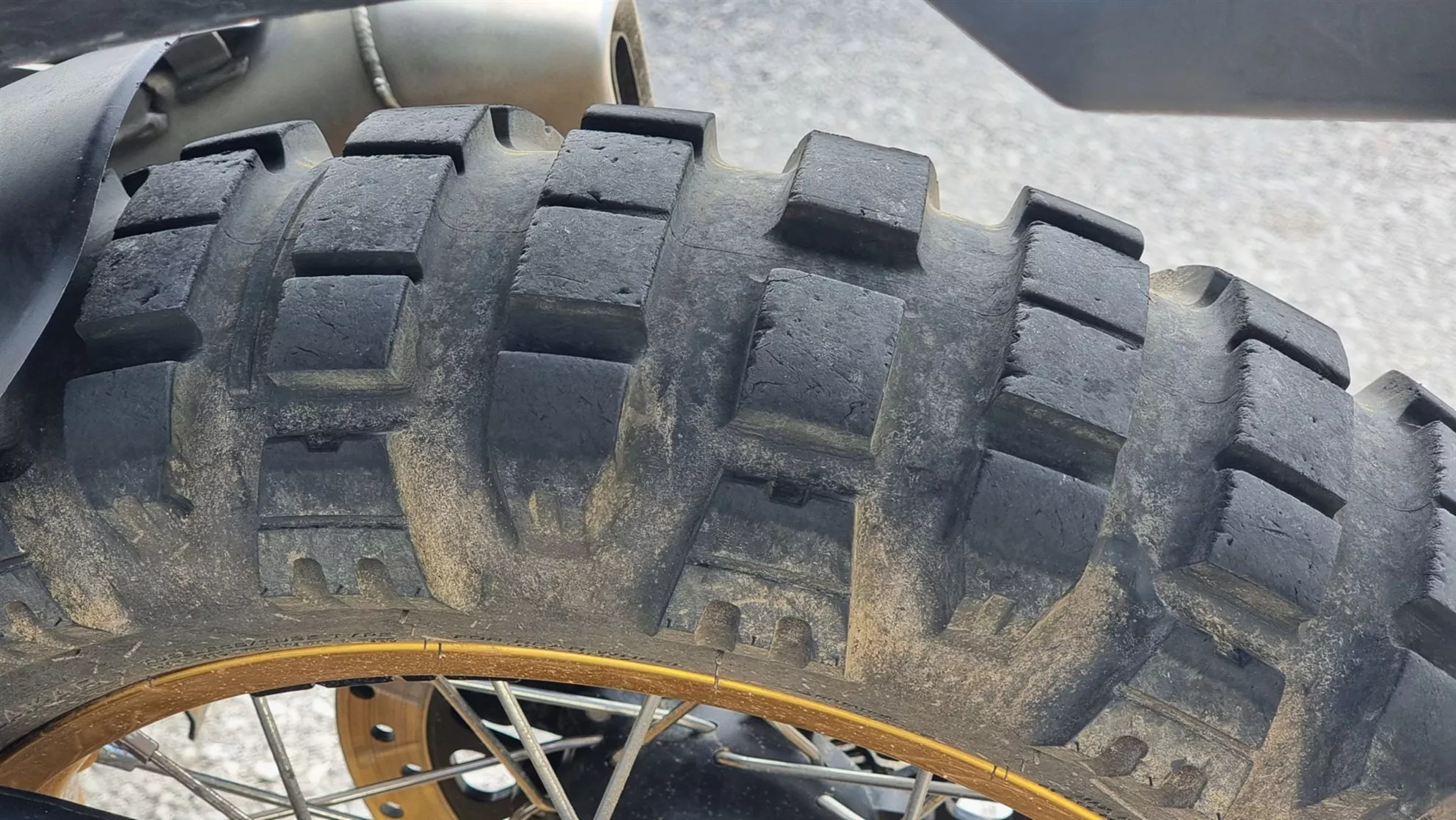
The rear tire of the XT+ Dakar also has a few more tours left in it.
Mitas Enduro Trail XT+ Dakar - Tubeless or Tube Tire?
The Triumph Tiger 900 Rally Pro utilized the Mitas Enduro Trail XT+ tire on its tubeless rims during our journey. In contrast, the Royal Enfield Himalayan relies on traditional tube tires. For the Tiger, we adjusted the tire pressure to 1.6 bar in the front and 2.0 bar in the rear for the muddy sections. The Himalayan was running at 1.5 bar in the front and 1.8 bar in the rear. Generally, I prefer tube tires because they allow you to manage in the wilderness even in the case of a rim strike or a cut tire. While tubeless tires are easier to patch when damaged by sharp objects, in a pinch, you still need to insert a tube, which isn't always straightforward with every tubeless rim. Due to the soft conditions on our tour, there was no risk of significant tire damage, but if, for example, you want to tear through relentless rocky trails at high speeds in Bosnia, the XT+ Dakar, with its hard carcass and heavy-duty rubber compound, is well-suited. The downside is that the hard tire is very difficult to lever off the rim manually. Many hobby mechanics have struggled with manual tire changes on the related E-09. Our tip: Carefully ride a bit further with a flat tire to bring the rubber to temperature through the flexing motion, then quickly remove the warm, thus softer, tire from the rim. This can help somewhat, but the XT+ remains quite a challenge during a pit stop in the wild.

Once with a tube, once tubeless - The Mitas Enduro Trail XT+ works well in both cases, even without a rim lock and with low air pressure.
Mitas Enduro Trail XT+ off-road tires compared to the competition
The adventure bike segment is steadily growing, and so is the number of tires for mixed use. For those currently searching for the right tire for their on-/off-road tour, I dare a quick comparison with competing tires that were considered before the trip. Popular 50/50 tires, such as the Metzeler Karroo 4, Heidenau K60 Ranger, or Dunlop Trailmax Raid, were taken into account because they perform excellently on the road and offer decent off-road performance. However, due to the shallower tread depth and larger, closely spaced tread blocks, a problem in muddy terrain was foreseeable. The classic among adventure bike tires, the Conti TKC 80, was also shortlisted. Due to its age, it is somewhat slippery in the wet, and especially the large knobs on the front tire were too wide and flat for mud and soft soil. Another option was the Michelin Anakee Wild, NastyNils' favorite 50-50 off-road tire, but it doesn't roll as smoothly on paved roads. Ultimately, the deep tread of the Mitas tires and the resulting minimal nervousness when looking at the weather forecast were decisive.
Conclusion on the Mitas Enduro Trail XT+ Dakar Offroad Tire
The Mitas Enduro Trail XT+ is a great tire for those who find the off-road performance of standard 50-50 tires insufficient. It allows you to confidently navigate light to rough gravel, forest roads, and dirt paths, only reaching its limit in sticky mud. At the same time, longer rides on the highway are no problem, and in dry conditions, you can cruise quite swiftly through the twisties. As is typical with knobby tires, it takes some time to get used to the movement of the knobs and caution is advised in wet conditions. Those planning to undertake long tours should opt for the Dakar version of the XT+ tire due to its higher mileage, heavier load capacity, and to prevent potential flats.
Does the Mitas Enduro Trail XT+ off-road tire sound interesting to you? Find more information about the features and available dimensions of the Enduro Trail XT+ on the Mitas website.
Mitas Enduro Trail XT+ Dakar Offroad Tire in the Big Test 2024 Images
Source: 1000PS



























































